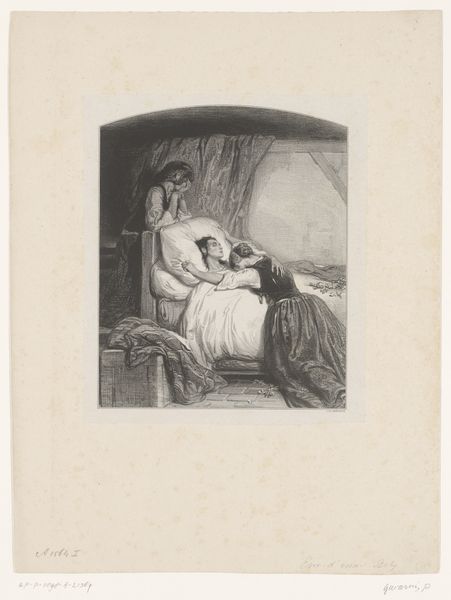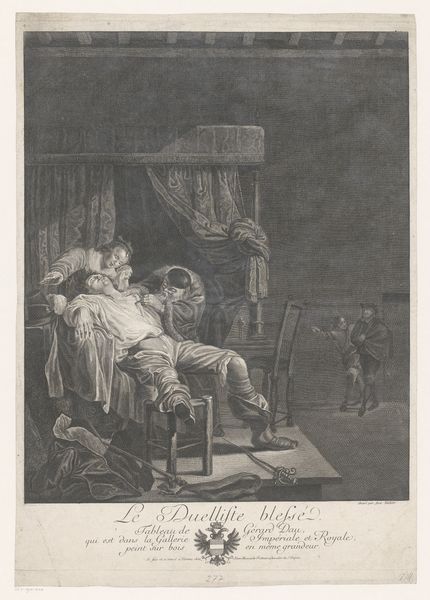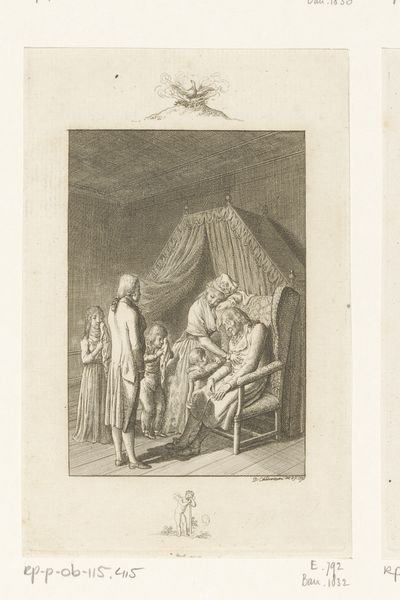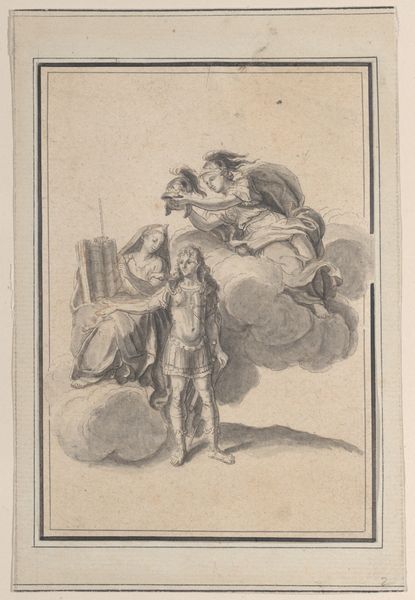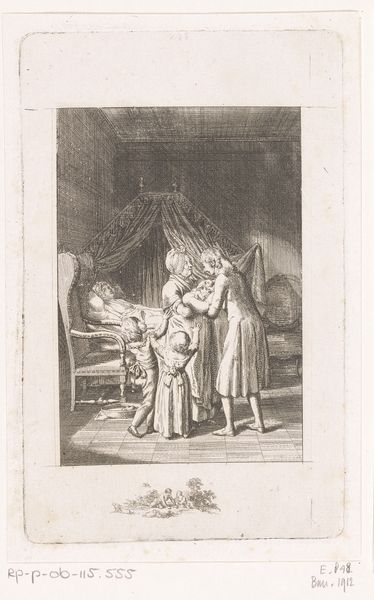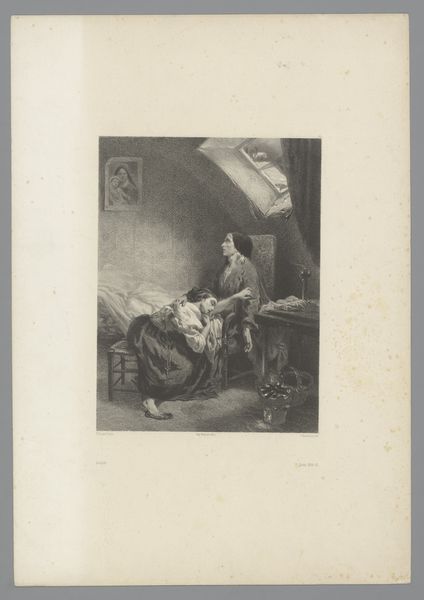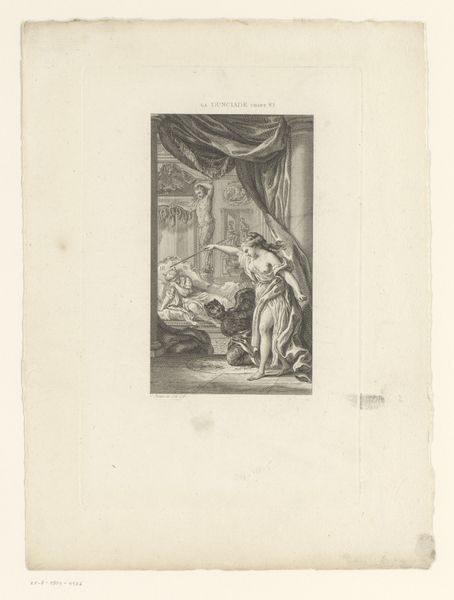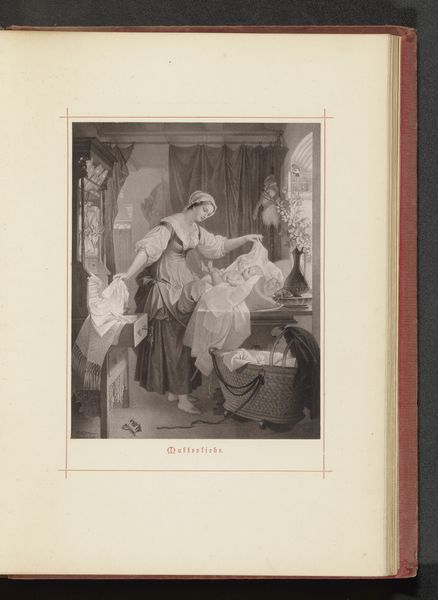
drawing, tempera, watercolor
#
drawing
#
narrative-art
#
baroque
#
tempera
#
figuration
#
watercolor
#
watercolour illustration
#
history-painting
#
watercolor
Dimensions: height 162 mm, width 135 mm
Copyright: Rijks Museum: Open Domain
Curator: This tempera and watercolor drawing is titled "Isaak zegent Jakob," or "Isaac Blesses Jacob," and was created by Matthijs Balen sometime between 1684 and 1766. Editor: Well, it looks like a scene ripped straight from an old storybook. Sort of a faded memory with delicate, hazy grays, do you agree? Curator: Absolutely. The gray monochrome wash, known as "grisaille", gives it a timeless, almost dreamlike quality. But more than that, it evokes the visual style associated with Baroque narrative art, lending importance and credibility to the tale. What catches my eye is how Isaac’s blindness seems emphasized—almost as if to suggest a deeper sight beyond the physical. Editor: Oh, totally. Blindness as insight, right? I dig it. But there's also something so *off* about the body language. The hunched figure, the outstretched hands—it almost feels more like a transaction than a blessing, doesn’t it? Curator: A transaction of fate, perhaps? Think about it: Isaac is tricked into blessing Jacob instead of Esau, altering the lineage of the patriarchs. This image distills the tense exchange and all its fateful implications in symbolic fashion. That limp curtain draped over the bed and the rigid vertical window frame serve almost like a diagram for deceit. Editor: Good point. So, even without knowing the specifics, you sense the underlying tension and intrigue. Like, something's not quite kosher in this picture. Even the way the characters avoid any sense of emotional or bodily openness; the mood is definitely tense, the air heavy with a family drama being enacted under heavy covers. I like the symbolism and narrative charge. It's economical storytelling through these subtle gestures, too. Curator: Precisely. It highlights how visual stories echo cultural memory and carry symbolic weight beyond a literal scene. Editor: Definitely gives you pause, doesn't it? Art doing what it does best. Makes you ponder stories of origin and meaning that stay relevant century after century, now reframed for our sensibilities, while the scene melts into almost sepia tones that remind us how memory sometimes works. Thanks for pointing out its timeless qualities.
Comments
No comments
Be the first to comment and join the conversation on the ultimate creative platform.
